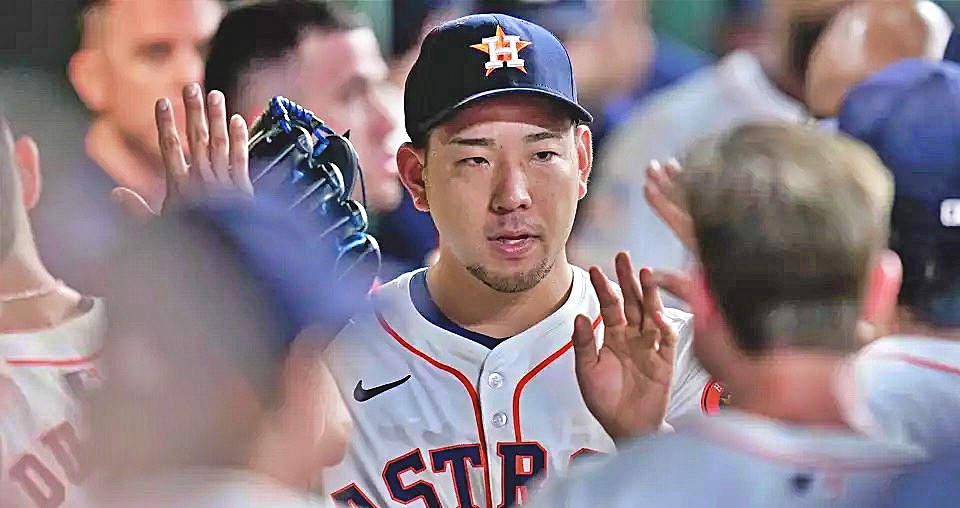
The Houston Astros paid a high price to pry starting pitcher Yusei Kikuchi from the Toronto Blue Jays in late July, but Kikuchi quickly began paying dividends with solid August results.
Kikuchi’s performance was among the brightest of the ten Japanese imports in Major League Baseball. Starter Shota Imanaga of the Chicago Cubs and Shohei Ohtani of the Los Angeles Dodgers also stood out, as did outfielders Seiya Suzuki of the Cubs and Masataka Yoshida of the Boston Red Sox and reliever Yuki Matsui of the San Diego Padres.
Pitcher Kenta Maeda of Detroit, though, had a difficult month after being moved to the bullpen. Elsewhere, Yu Darvish of the Padres spent time on the Restricted List to deal with a family issue, Dodger starter Yoshinobu Yamamoto began rehab assignments after more than two months on the Injured List, and starter Kodai Senga of the New York Mets remained on the Injured List.
Yusei Kikuchi
After quite a bit of trade speculation, Kikuchi was dealt to Houston on July 29 and was very effective in his first month with the club. In six starts, he posted a 3-0 record with a 2.57 ERA and 0.94 WHIP. Two factors, reportedly are less reliance on his curveball and more on his slider.
“His command has always been the question mark, so his reduced curveball usage in Houston has made sense. His [first] two games [with Houston] have seen some of his heavier sustained changeup usage,” Eno Sarris of The Athletic wrote.
The deal with Toronto was expensive for the Astros, especially since Kikuchi will be a free agent after the season, but they needed help in their starting rotation as they continue to lead Seattle in the fight for the American League West title.
The question is whether Kikuchi will continue to be effective. Through the first two months of the 2024 season, the 33-year-old continued the improvement he’d exhibited in 2023, but he then posted earned-run marks of 6.26 and 6.59 in June and July, respectively.
Overall this season, Kikuchi is 7-9 with a 4.24 earned-run mark.
Shōta Imanaga
Imanaga continued to impress in August, showing no signs of regressing in his first MLB season.
He was 3-1 with a 1.01 WHIP during the month, and his overall marks stand at 11-3, a 3.14 ERA, and a 1.05 WHIP. He is averaging just 1.4 walks per nine innings – a full walk lower than his career average in Japan – and is averaging 9.1 strikeouts per nine innings, just slightly lower than his NPB figure of 9.4.
“Playing at this level will definitely expose you as a player, but also as a person and emotionally,” Cubs second baseman Nico Hoerner said. “He’s just very well-equipped to handle whatever this sport happens to throw his way. His personality is a big part of why he’s been able to have success making a really challenging transition.”
In a 14-2 win over Miami on August 24, he and outfielder Seiya Suzuki combined to make the Cubs the first MLB team to have one Japanese-born player hit three or more extra-base hits in the same game in which a Japanese-born pitcher was credited with the victory.
Imanaga has pitched 146.1 innings so far in 2024, which exceeds his average of 141.2 during his time in NPB. His season high was 170 innings in 2019.
Shohei Ohtani
Though he had his worst month of the season from the batting average and on-base standpoints, Ohtani had a number of highlights during August.
He reached the 30-home-run/30-stolen-bases level for the first time on August 3 and then hit a walk-off grand-slam home run against Tampa Bay on August 23 to become only the sixth player in MLB history to hit at least 40 home runs and steal at least 40 bases in a single season. On August 30, he raised the bar by reaching the 43-43 level, the first MLB player to do so, and he then hit his 44th homer the following day. And he has a legitimate shot at being the first 50-50 player, having reached the 40-40 level far more quickly – in just 126 games – than anyone else.
Ohtani averaged just .235 in August with a .286 on-base percentage, but he hit 12 home runs, drove in 22 runs, and stole 15 bases in 15 attempts. Overall, he’s averaging .293 with 44 home runs, 98 RBI, and a .999 OPS. His hard-hit rate and strikeout percentage – if they hold up the rest of the season – would be the best of his seven-year MLB career. His line-drive percentage is up from his career mark, and his groundball percentage is down. And on-base and slugging percentages are currently his second-best.
His 6.9 WAR figure, according to Baseball Reference, equals his career best, is best in the National League and sixth-best in MLB. He ranks second in MLB in home runs, slugging percentage and stolen bases; fourth in OPS; second in stolen bases and tied for third place in RBIs.
On the pitching side, on August 24 Ohtani threw off the mound for the first time since undergoing off-season Tommy John surgery.
“His ability to do both [pitching and hitting] brings exponential value,” Dodgers general manager Brandon Gomes said. “So let’s just say the offensive side takes a small step back — that’s still so valuable, that he can do both. Oh, and by the way, if his offense takes a step back, it’s still MVP-caliber offense. Yes, he’s had an amazing season. But the ability to do both is somehow still completely underappreciated.”
Yuki Matsui
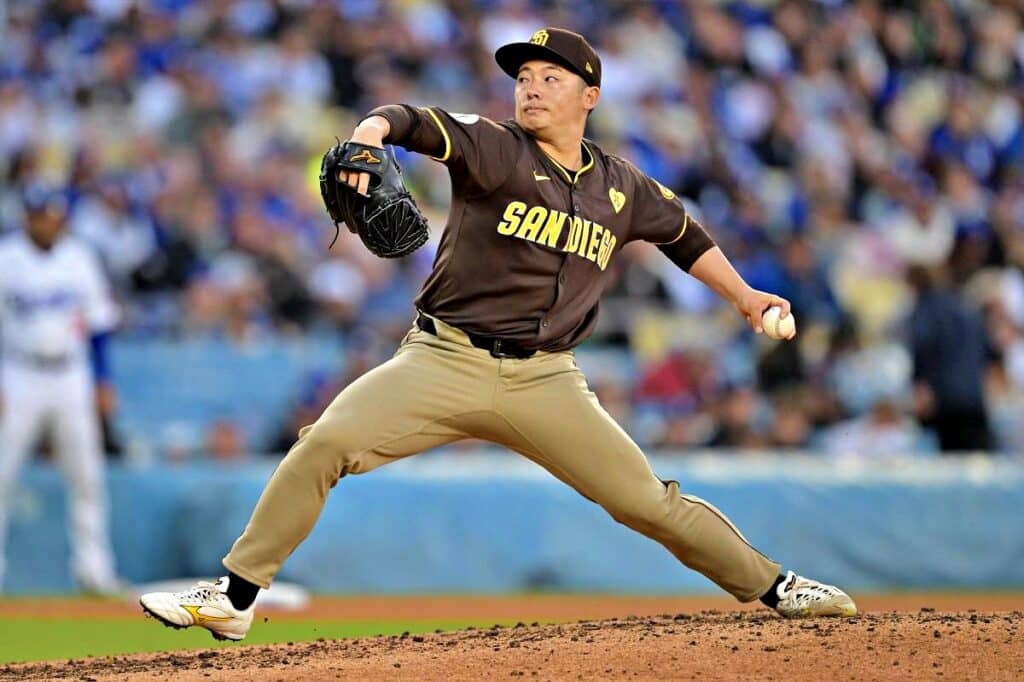
Matsui, a 28-year-old in his first MLB season, has been solid for the Padres in the regular season. In 11 August appearances totaling 13.1 innings, he was 1-1 with a 3.38 ERA. The only real blemish was his four home runs allowed, twice the number he had given up in the season’s first four months.
At the end of August, Matsui stands at 4-2 with a 3.38 earned-run mark. He’s given up just 32 hits in 45.1 innings. Although his walk rate is high at 3.7/9 innings, he walked just two batters in 22.2 innings over July and August.
Though Matsui was a closer in Japan, he’s been used almost entirely in non-save situations with the Padres. He was put into the closer role against Kansas City on June 2 when regular closer Robert Suarez was not available and gave up three runs as the Padres lost 4-3. Matsui has actually finished nine other games, but he either entered those either with the Padres losing or winning by a large margin – eliminating save situations.
Seiya Suzuki
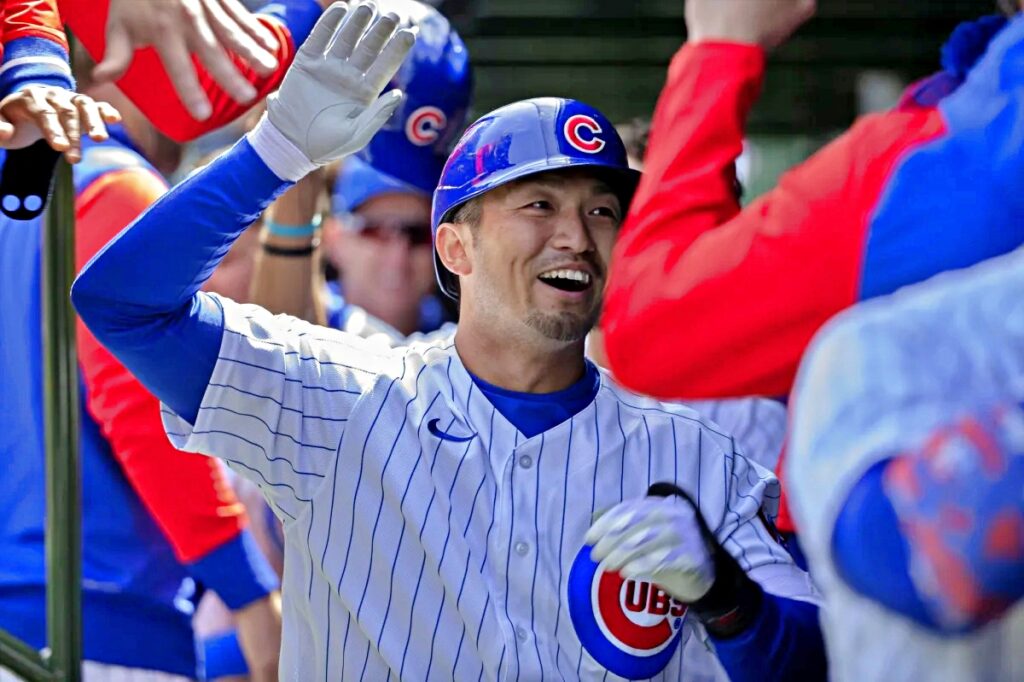
Suzuki heated up in July and continued that in August, hitting .287 for the month, getting on base at a .354 rate, and slugging .495. He hit four home runs, 12 RBIs, and nine multi-hit games.
For the season, his numbers are a .274 batting average, a .346 OPB, and a .485 slugging mark. He has hit 19 home runs and driven in 64 runs. The home-run total is one short of his MLB career high, and he needs just 10 RBIs to match his career best.
During his nine-season career in Japan’s Nippon Professional Baseball (NPB), he was noted for making consistent contact and getting on base frequently. He had a .402 career on-base percentage in Japan, but his corresponding mark in two-and-a-half seasons with the Cubs is .347. In Japan, he struck out in 18 percent of his at bats. With the Cubs, the figure is 27 percent.
Suzuki is in the third year of a five-year, $85 million contract he signed prior to the 2022 season.
Masataka Yoshida
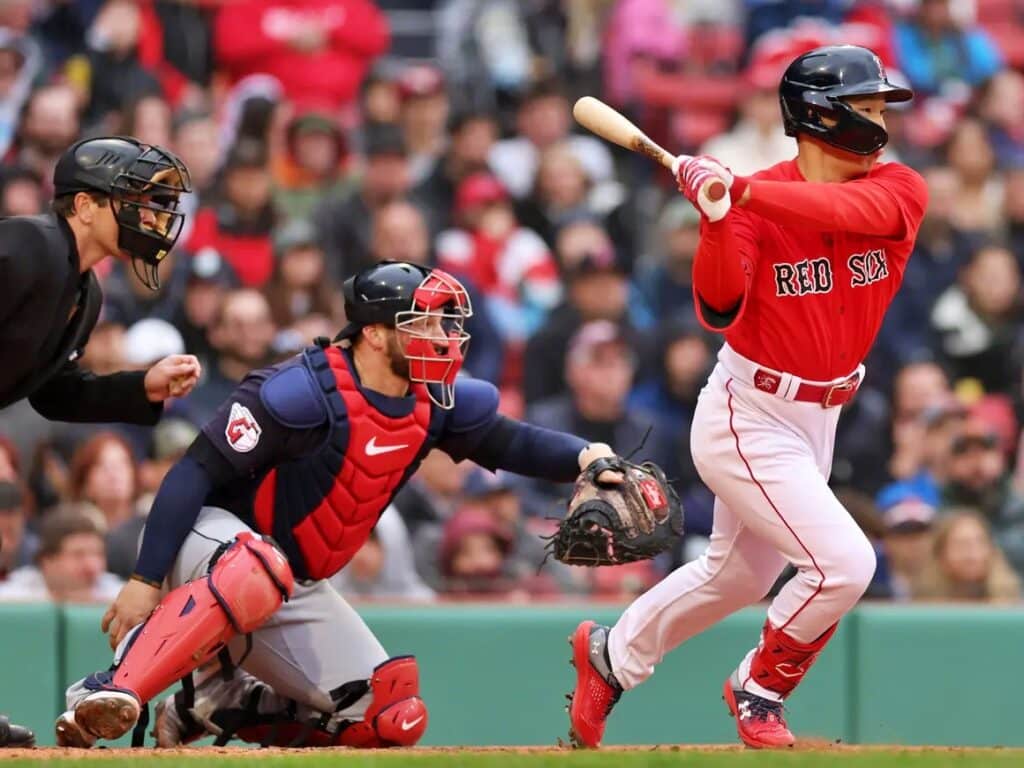
For much of 2024, Yoshida hadn’t been what the Red Sox needed, but he perked up in July and continued his hot hitting in August. He averaged .326 during the month with a .381 OBP and .516 slugging mark, and season slash line now reads .290/.347/.441.
Signed to a five-year, $90 million contract before last season – which more than a few observers thought was an overpayment – Yoshida may be starting to pay dividends.
“I think the swing is getting to the point that he’s hitting the ball hard all the time,” Red Sox manager Alex Cora said after Yoshida homered against the Seattle Mariners. “He stayed with the breaking ball for the base hit. That was a great swing. You see it in BP now. The exit velocity…it’s like 100 (mph) all the time and the ball is carrying again. It has that backspin. So whatever he did mechanically, it’s helping. He’s healthy. That’s the most important thing.”
Yoshida has been a slow starter for much of his career, first in Japan and now in MLB, so it’s possible that his production could continue increasing as the season goes along. But with the Red Sox having a surfeit of outfielders, along with the fact that Yoshida’s defense was sub-par in 2023, he’s been having to adjust to being mostly a designated hitter. After playing 713 innings in left field in 2023, he’s played just one inning there this season, and he said earlier in the season that he misses playing in the field.
Kenta Maeda
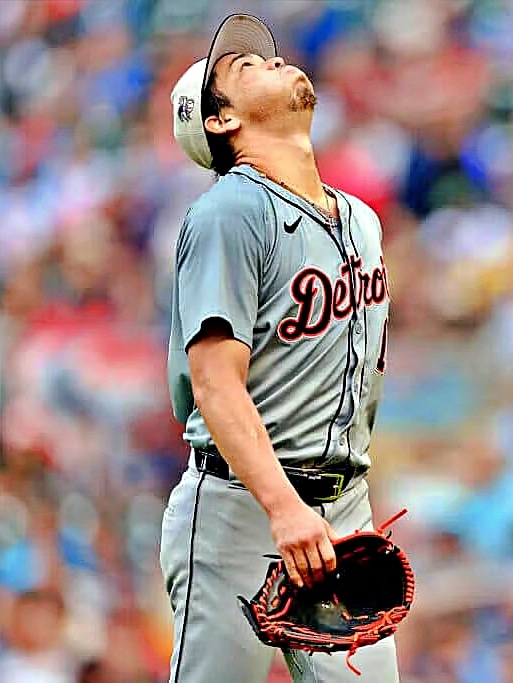
In the first season of a two-year, $24 million deal, Maeda was moved from a starting role to the bullpen in mid-July after not being effective in a starting role.
“He’s going to go to the bullpen for the foreseeable future,” manager A.J. Hinch said at the time. “We have some adjustments we’d like him to make. He’s open to any and all ideas.”
Maeda hasn’t made a start since July 9, and has worked as a bulk-innings reliever. He’s posted a 4.55 ERA, 1.11 WHIP and 26:2 K:BB over 29.2 innings across his seven relief appearances, with his ERA enlarged by a tough outing against the Cubs in which he gave up six runs in five innings.
Overall, Maeda is 3-6 with a 6.14 earned-run average and 1.43 WHIP. His home runs-allowed rate (1.8 per nine innings) is the highest of his career, and his strikeout rate (7.3/9) is by far the lowest.
Yoshinobu Yamamoto
In the first year of a 12-year, $325 million contract, Yamamoto went on the Injured List on June 16 because of a rotator cuff strain. He made his first rehab start for AAA Oklahoma City on August 28, pitching two innings and allowing a hit and one earned run.
“Threw well, came out of it good,” Dodger manager Dave Roberts said. “Hopefully, we can get him to three innings [in] his next outing and then throw another one in the pen after that and then have a real conversation [about whether] it makes sense for him to join us.”
The Dodgers had been letting Yamamoto start every sixth or seventh day, as he did in Japan, and he was handling the transition well.
For the season, he’s averaging 10.2 strikeouts, 7.5 hits, 2.1 walks, and 0.7 home runs per nine innings – all outstanding marks. Opposing batters are averaging just .221 with an on-base percentage of only .266 and a .357 slugging percentage. Overall, he is 6-2 with a 2.92 ERA, and his FIP (fielding independent pitching) mark is an excellent 2.67.
Yu Darvish
After undergoing a minimally-invasive arthroscopic debridement in his pitching elbow during the offseason, Darvish had a reasonably good, if inconsistent April, and followed that with a very solid May. But he has had injury trouble and hasn’t pitched since May 29.
He spent 15 days on the Injured List in April because of “neck tightness” and then went back to the IL in early June because of a groin strain. He had been scheduled to come off the IL on June 25, but his return was delayed because of inflammation in his right (pitching) elbow. Then, on July 6, he was placed on the restricted list. Padres manager Mike Shildt said that Darvish was dealing with “a personal matter involving his family.”
He came off the restricted list on August 23 and pitched in a simulated game on August 30.
Darvish is 4-3 with a 3.20 ERA and 1.07 WHIP this season. He is allowing 2.4 walks per nine innings, which, if continued throughout the season, would be the second-best mark of his career.
Kodai Senga
It’s been a lost season for Senga, though it might not be over.
He suffered a setback early in spring training when he was diagnosed with a moderate right posterior capsule strain and received a platelet-rich plasma (PRP) injection. He was eventually placed on the 60-day Injured List. He made his season debut until July 26 against Atlanta but left that game after 5.1 innings with a calf strain that resulted in another trip to the 60-day IL.
Senga is eligible to come off the IL on September 25. The Mets believe there is a chance that he could pitch one of the final five regular-season games, as well as be available for the playoffs, should the Mets qualify.
In 2023, the first of a five-year, $75 million deal, Senga was named an All-Star and placed second in the National League Rookie of the Year voting, so the Mets had expected him to be a big part of the rotation as they tried to rebound from a disappointing 2023.
Senga needs to pitch at least 400 innings from 2023-2025 to be able to opt out of his deal at the end of the 2025 season. He is now all but certain not to reach that figure, with just 172 innings so far. He would have to throw 228 more, and no one threw more than 216 in 2023. Not reaching the 400 mark would mean that Senga would be under team control through at least 2027 at $15 million per season.
NOTES: So far this season, Chiba Lotte’s Roki Sasaki is 7-4 with a 2.25 ERA. He has 98 strikeouts and 27 walks in 84 innings . . . Rintaro Sasaki, the high-school phenom in Japan who opted to play at Stanford University instead of going through the NPB draft, played nine games for Greeneville in the Appalachian League, hitting .391 with three home runs, eight RBI, and a 1.508 OPS. An article in The Athletic (subscription required) suggests, though, that he isn’t yet a legitimate draft prospect . . . Japanese players in the NPB are trying to gain control of their NIL (name, image, likeness) rights and take on the league’s reserve system, which is similar to what Major League Baseball had prior to the 1975 arbitration decision in favor of pitchers Andy Messersmith and Dave McNally. Here is a link to an additional article about this (subscription required).





